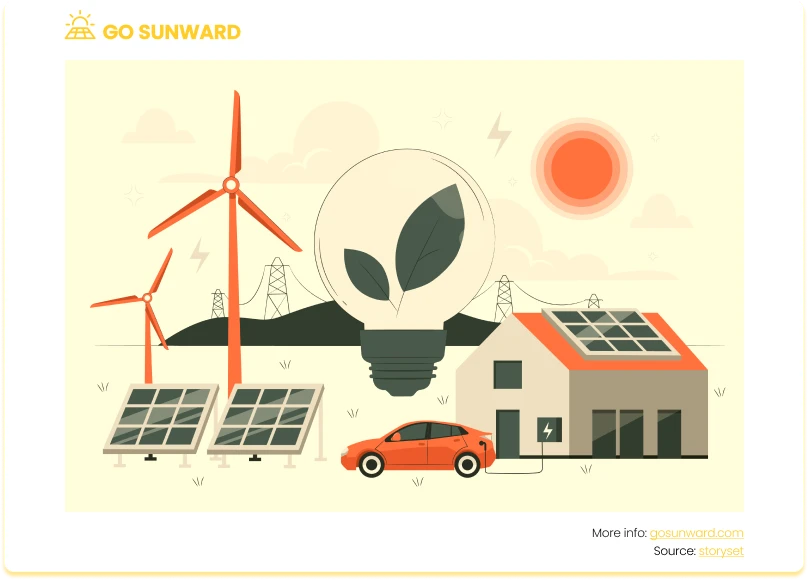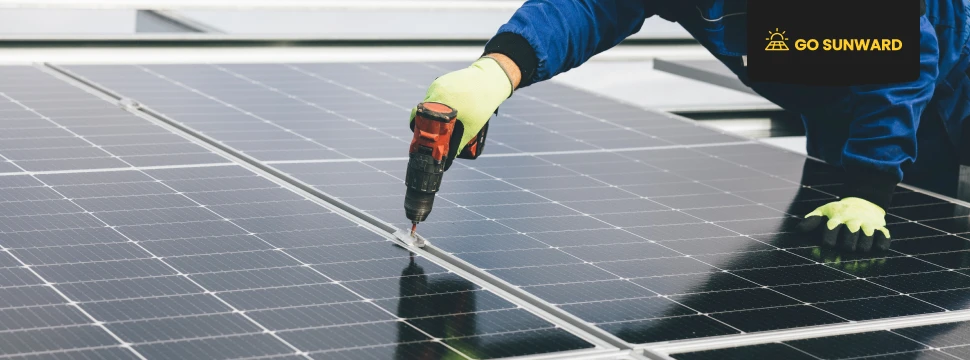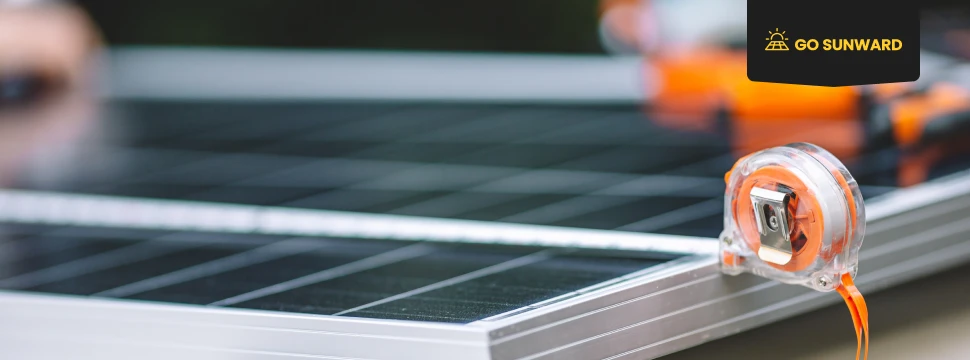How Can I Lower My Electric Bill?
In an age where electricity is an essential part of our daily lives, the surge in energy costs over the past year has left many homeowners, renters and businesses alike grappling with increasingly burdensome electricity bills. Increasing costs and growing environmental concerns have prompted individuals to seek innovative ways to lower their electric bill by reducing their consumption and save money.
The good news is that there are several steps you can take to significantly lower your energy usage, from undertaking an energy audit, adopting smart solutions at home, implementing energy-saving habits like turning off vampire power appliances and taking shorter showers, exploring renewable energy options like solar energy, and ensuring you’re on the most cost-effective utility rate plan. In this article, we will explore straightforward yet effective strategies to help you combat the ever-increasing electricity costs, reduce your energy bill, and boost your environmental sustainability credentials.
Energy Bills Rising, So How Can I Lower My Electric Bill?
A series of geopolitical factors, rising electricity demand and significant supply headwinds in the global energy market have led to a surge in electricity prices for consumers worldwide over recent years. In the US, the average monthly electricity bill for residential customers increased 13% from 2021 to 2022, rising from $121 a month to $137 a month. This upward trajectory has continued well into 2023.
While there’s not much we can do about the cost of electricity, we can take several steps to reduce our usage and how much we have to pay for our bills.
So how can you lower your electric bill? Here are some of the most effective ways:
1. Conduct An Energy Audit To See Where You Can Reduce Your Electric Bill
An energy audit is a critical first step towards significantly reducing your electricity bill. Essentially, it involves a systematic assessment of your home’s energy usage, helping you pinpoint areas where energy is being wasted and where improvements can be made. Essentially, it’s like giving your home a comprehensive check-up to diagnose energy inefficiencies.
While hiring a professional energy auditor is an option, individuals can also take matters into their own hands by conducting a DIY energy audit. This process typically entails a thorough inspection of your home’s insulation, lighting, appliances, heating/cooling facilities, and hot water/ cold water systems to identify areas that could benefit from energy-saving measures. Understanding your energy consumption patterns, which can be revealed through this audit, is key to making informed decisions about where and how to make improvements.
2. Upgrade to Energy-Efficient Appliances
One of the most impactful steps you can take to lower your electric bill is replacing old, inefficient appliances with their modern, energy-efficient counterparts. Newer appliances are designed with cutting-edge technology that consumes significantly less energy, translating into lower electricity bills over time. Look for the ENERGY STAR® label on an appliance, a government-backed symbol signalling energy efficiency!

Household appliances such as refrigerators, heating, lighting, ventilation, and air conditioning (HVAC) systems, and water heaters are among the biggest culprits when it comes to energy consumption. These appliances are the workhorses of your home, running constantly and consuming substantial amounts of electricity. By upgrading to energy-efficient models, you can expect substantial reductions in your energy usage. For instance, a high-efficiency refrigerator can use up to 40% less energy than older models, and a modern HVAC system can offer substantial energy savings through features like programmable thermostats and variable-speed motors.
In particular, using energy-saving lighting solutions is a key way to reduce electricity consumption. Energy-saving lights including LED bulbs and CFL bulbs can all be used to boost savings: LED bulbs generally exhibit 90% efficiency, while CFL bulbs achieve an efficiency of 85%. In stark contrast, traditional incandescent bulbs stand at a mere 10% efficiency. For more information on LEDs and energy-saving lights, click on the links.
3. Implement Energy Saving Habits To Lower Your Electric Bills
Beyond technological upgrades, adopting energy-saving habits in your daily life can be a game-changer when it comes to curbing electricity costs and reducing your environmental impact. Simple yet effective changes in behavior can make a substantial difference. Start by making it a habit to turn off lights and appliances when they’re not in use. Leaving lights on in empty rooms or keeping devices plugged in, such as televisions and fans, can result in an unnecessary energy drain. Unplugging devices or using smart power strips to reduce standby power consumption can further prevent energy wastage from ‘vampire’ appliances.
Optimizing your thermostat settings is another key practice. During the colder months, lowering the thermostat a few degrees when you’re away or sleeping can save energy without sacrificing comfort. Conversely, in the warmer months, raising the thermostat a few degrees can have a similar effect. These seemingly small adjustments can lead to noticeable reductions in energy consumption over time.
4. Insulating The Home
When it comes to energy efficiency, the significance of proper insulation and sealing cannot be overstated. Your home’s ability to retain heat during the winter and keep cool in the summer hinges on its ability to prevent energy leaks. Common culprits for heat or cold loss include windows, doors, and attic spaces. Windows and doors, if not properly sealed, can allow drafts to infiltrate your living spaces, causing your heating or cooling system to work overtime. Similarly, attics that lack adequate insulation can lead to a significant loss of conditioned air.
It’s crucial to identify and seal gaps and cracks around windows, doors, and other potential entry points for air leaks to tackle these issues. Moreover, improving insulation in your attic can create a more comfortable indoor environment year-round.

5. Deploy Smart Home Technology
In the age of digital innovation, smart home technology has emerged as a powerful tool for efficient energy management. This technology encompasses a range of interconnected devices and systems designed to enhance the control and monitoring of various aspects of your home, including energy consumption. Smart thermostats, for instance, have become very popular in regulating indoor temperatures. They allow homeowners to remotely adjust heating and cooling settings, schedule temperature changes, and even learn from your habits to optimize energy use automatically.
Lighting controls, such as dimmer switches, is another facet of smart home tech, that enable you to manage your lighting remotely, ensuring lights are only on when needed and dimmed or turned off when rooms are unoccupied. Energy monitoring systems offer real-time insights into your energy usage, empowering you with data to make informed decisions about when and how to use electricity more efficiently. Collectively, these smart technologies not only enhance convenience but also significantly reduce energy waste by allowing homeowners to fine-tune their energy consumption.
6. Explore Renewable Energy Options
In the pursuit of sustainable and cost-effective energy solutions, the adoption of renewable energy sources such as solar panels and wind turbines has gained substantial momentum. LINK. These sources offer the promise of not only reducing your reliance on conventional, grid-supplied electricity but also lowering your electric bills over time.
Capitalizing on solar energy, via solar panels, for instance, capture the sun’s energy and convert it into electricity, providing a clean and renewable power source for your home. Click on these links for all the information you could need on solar energy, from how solar panels are made, how they reduce CO2 emissions and how they produce electricity.
One key incentive to consider when contemplating these investments is the availability of government incentives and tax credits to make renewable energy installations more affordable. These financial incentives can significantly reduce the upfront costs of installation and speed up the payback period. While the initial investment in renewable energy technology may seem substantial, the long-term financial benefits are noteworthy. By generating your electricity, you can potentially eliminate or drastically reduce your monthly electricity bills, ultimately recouping your investment and saving money over the life of the system. Moreover, as renewable energy systems typically have low maintenance costs and can last for decades, they represent not only a smart financial move but also a significant contribution to a cleaner and more sustainable energy future.

7. Investigate & Understand Utility Rate Plans To Lower Your Electric Bill
Selecting the right utility rate plan is a decision that carries substantial financial implications and can significantly lower your electric bill. Different utility rate plans are designed to accommodate various consumption patterns and lifestyles, making it essential to choose one that aligns with your household’s energy habits.
Time-of-use rates and tiered pricing are two common rate plan options to consider. Time-of-use rates offer different electricity prices at various times of the day, reflecting the demand for electricity during peak and off-peak hours. This type of plan can be advantageous if you can shift energy-intensive activities, like running your dishwasher or doing laundry, to off-peak hours when rates are lower. On the other hand, tiered pricing involves charging different rates based on the total amount of electricity consumed. Initially, you’re charged a lower rate within a specified consumption threshold, but once you exceed that threshold, you enter a higher-priced tier.
To make an informed decision, it’s crucial to analyze your household’s energy consumption patterns. Are you typically home during peak hours? Do you have energy-efficient appliances that allow for flexible usage? Understanding how and when your household uses electricity will enable you to select a rate plan that not only suits your lifestyle but also maximizes potential savings. Ultimately, the right utility rate plan can help you manage your electricity costs more effectively and reduce your environmental footprint.
Conclusion
In a world where energy costs continue to rise and environmental concerns grow increasingly urgent, taking steps to reduce energy consumption not only makes financial sense but also serves as a powerful means of environmental stewardship.
By implementing the strategies outlined in this article, from conducting energy audits and upgrading appliances to adopting energy-saving habits and exploring renewable energy options, you can unlock substantial savings on your electricity bills. Moreover, these actions have a ripple effect, collectively reducing the strain on our planet’s resources and mitigating the impacts of climate change. Hopefully, this article has effectively answered the question: ‘how can I lower my electric bills?’.




